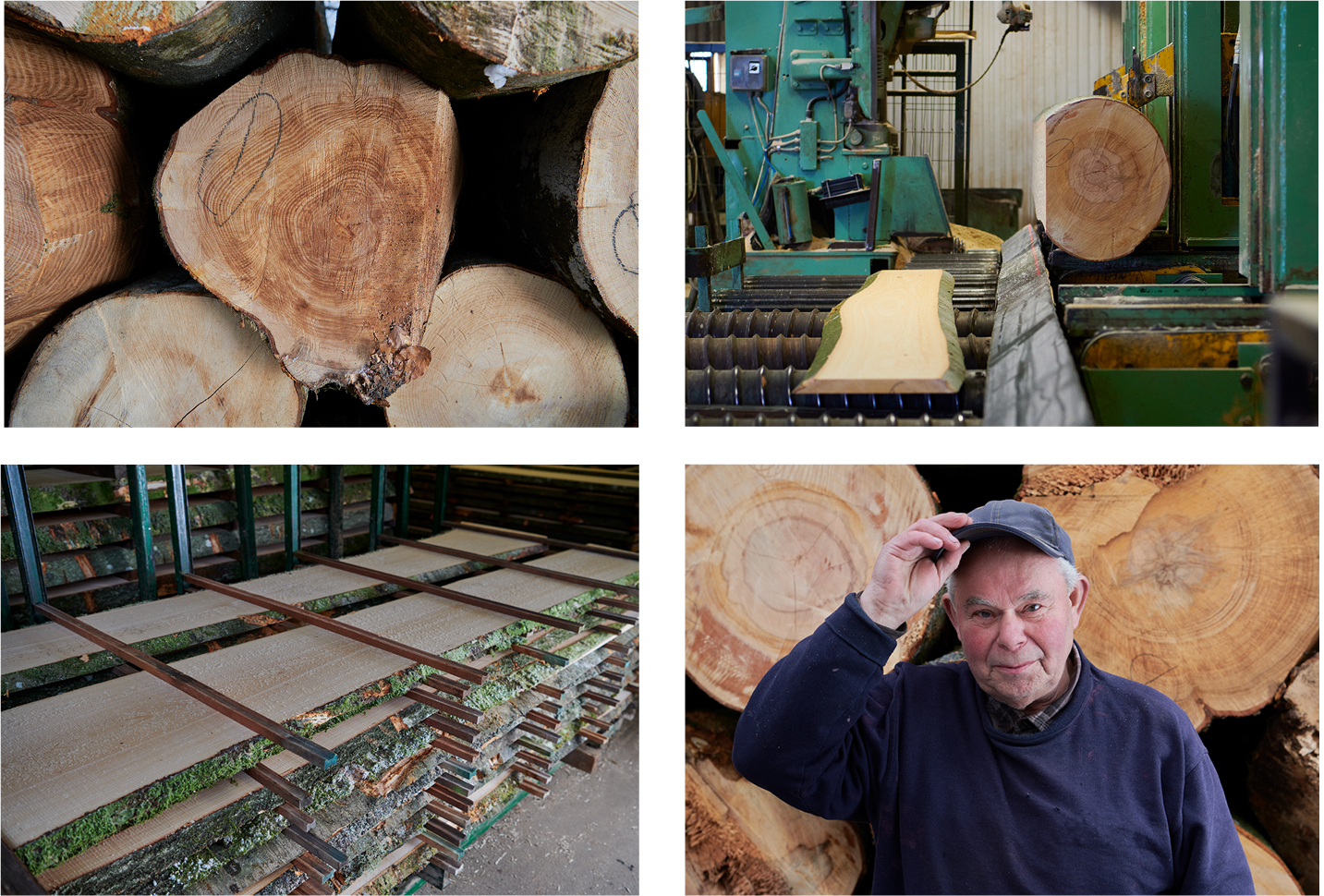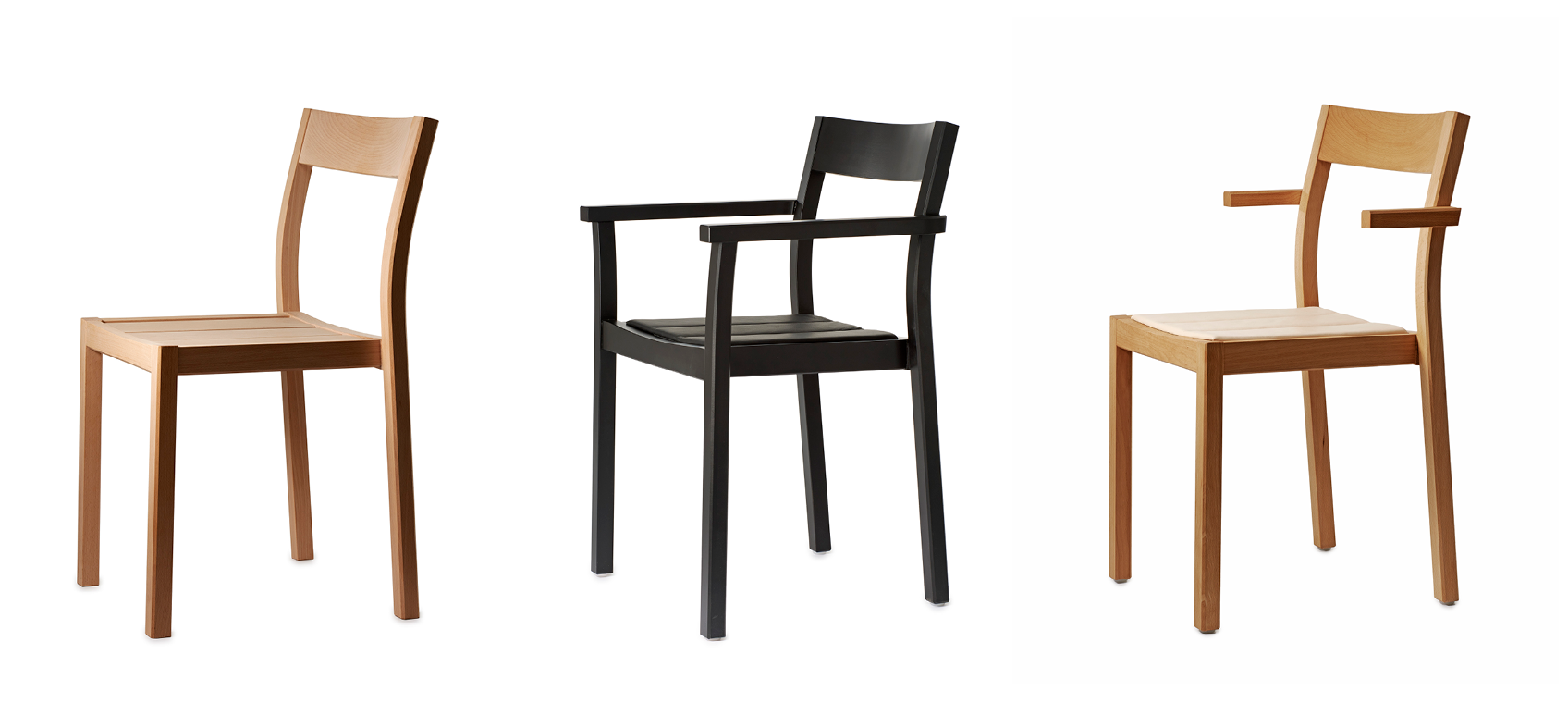Ronja – a tale of Swedish beech
“Ronja is no ordinary new chair, but marks the start of a process by Gärsnäs to use more domestic, locally sourced raw materials. We are making the effort, which hopefully will lead to Swedish wood being used in much more of our furniture,” says Dag Klockby, part-owner of Gärsnäs AB. “The main idea is to form a local supply chain that starts with the beech tree; a lovely hard wood suitable for furniture.”

The beech in southern Sweden (Fagus Sylvatica) is felled between 100 and 120 years old. The Swedish beech bought by Gärsnäs comes from southern Swedish forestry companies that both own and manage forests. The large trees provide a lot of timber. The logs are taken to Skättilljunga mill, which since 1970 is owned by Rolf and Gun Svensson, with seven employees. The timber is milled to the correct measurements and then dried for furniture use in the mill’s drying facility for 36–40 days. A normal-sized beech tree provides about 1.6 m3 beech wood. 50 Ronja chairs need around 1m3.
Ronja is made of solid beech. It demands high standards of design, carpentry and raw materials. Nothing is hidden, covered or layer glued. The seat consists of three pieces, slightly curved for comfort. On top of the back of this sleek wooden chair you’ll find a slot, a joining method, which signals beautifully that Ronja is solid wood. It is something for the fingertips, eyes and mind; a chair to sit proudly on. “Ronja’s design and manufacture enables a good piece of furniture to come from local timber. And it’s the wood that takes centre stage here. The chair is simple, straightforward and openly displays its construction,” says designer David Ericsson.

Ronja is a multipurpose chair. It comes in three versions: without arms, with arms or with short arms that let the chair hang from a table. It is stackable and linkable. Ronja switches personalities easily. With arms and a leather seat, it looks very elegant. It works well in offices, private kitchens and restaurants, even churches. It can be stacked tight and stands nicely in a row.
Gärsnäs has been producing wooden furniture for 130 years. Previously, we imported a lot of timber, then from the 1960s we became known for our beech wood, which was selected and bought as standing timber in the forests of southern Sweden. Beech was very popular in the 1970s and 80s, and it dominated public interiors. Eventually, a saturation point was reached. In the recession of the 1990s, beech fell out of fashion and was replaced by oak and birch. Until 2003, Gärsnäs had its own sawmill and drying facility.
Now we return to the Swedish beech forest and show it is possible to manufacture a chair from local timber and still get the economics right. “The concept is for the Ronja chair to be built from local wood, sawn at a nearby mill and made entirely in our factory. Now that’s really in-house. Using Swedish raw materials and shorter transports, we hope to diminish the chair’s climate footprint,” says Magnus Eriksson, CEO at Gärsnäs AB.

Swedish furniture is seldom made from Swedish wood. In the rationalisations of the industry, it has become the norm to purchase timber from Denmark, Germany, Poland and Ukraine via wholesalers. The place of origin and type of forestry management are often difficult to ascertain. Consequently, it is also problematic to establish an overview of the climate impact made by transportation. Swedish forestry is currently based on producing volume – lots of pine and spruce – however, there is growing interest within the forestry industry to raise the value of Swedish hardwood.
Petra Mattsson, sustainability manager at Gärsnäs, anticipates an exciting future where furniture companies collaborate with forestry companies and forest owners to an ever-higher degree; a distinct possibility, if furniture companies start using local timber.
“There’s a lot to do regarding consideration for nature in the forest. Together we can create the conditions for close-to-nature forestry, without clearcutting,” says Petra Mattsson.
Ronja even has a connection to a 60-year-old forestry project, PRO-beech, which during the 1960s promoted southern Sweden’s beech forests. Gärsnäs CEO at the time, Herbert Andersson, and a number of forest owners initiated the PRO-beech foundation in 1963 with the aim of saving southern Sweden’s beech forests, which were threatened then by faster growing spruce plantations, which were considered more profitable. If nothing was done, the beech would disappear from southern Sweden. One of many initiatives by PRO-beech was a design competition to popularise furniture made of beech, for both private and public interiors. One of the entrants, Åke Axelsson’s chair S 217, won a prize in 1963. That chair entered production and became a Gärsnäs classic, manufactured for 55 years.
The PRO-beech competition displayed beech’s qualities and contributed to a debate that would eventually lead to the beech forest legislation of 1974. Thereafter, felled beech forest had to be replaced with new beech trees.
Today, utilising local raw materials and diminishing climate impact is crucially important. With the new Ronja initiative, Gärsnäs wants to make the first step in using Swedish wood and leading the way forward.
